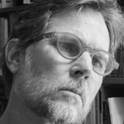
Picasso's 1924 Mandoline et guitare is a highly ambiguous painting consciously construed as a hidden head. A covert ‘second reading,’ the hidden head questions the content obvious in the primary reading of the still life. Picasso’s ambiguity encourages viewer awareness of visual perception. A lesson in the nature of representation, the painting also exudes a sense of the uncanny. It is secretly inhabited, conjoining cult value with exhibition value, insisting that 'other worlds' are located within the world we know.
Could such ambiguity be employed in architecture and in the presentation of architecture to suggest other worldliness? Le Corbusier revered Picasso, and understood and appreciated his ambiguity. After Hiroshima rendered architecture's alliance with high technology suspect in 1945, Le Corbusier brought the ambiguity exemplified in Picasso’s painting—together with its potent other-worldliness—to Modern Movement architecture.
This article considers the ambiguity of Picasso's 1924 Mandoline et guitar and Le Corbusier's later attempt to imbue architecture with its essence.
Available at: http://works.bepress.com/daniel_naegele/50/

A Spanish translation of this article was published in RA. Revista de Arquitecture, 11 (2009).